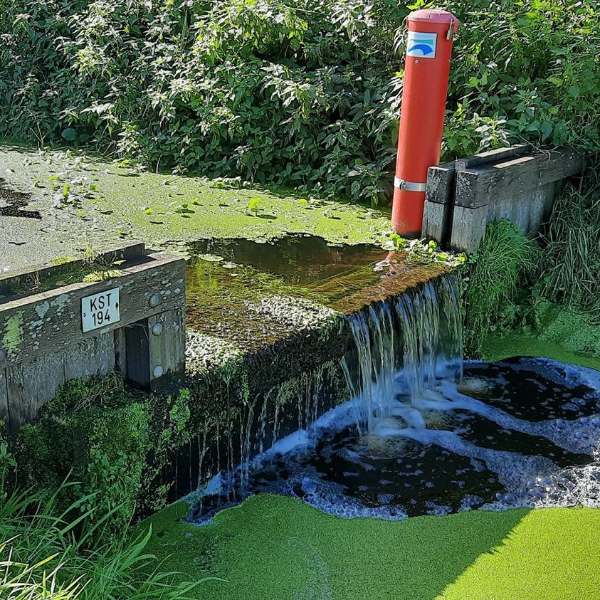Circular assets of water authorities: insight needed

Circular assets of water authorities: insight needed
The Dutch government has indicated that asset managers need to operate in a more circular manner in order to reduce their environmental impact. To do this, they need to gain insight into their assets and into circular ways of managing them. Witteveen+Bos, together with Metabolic, has carried out a study that lays the foundation for circular asset management (of water treatment plants, locks, etc.) by water authorities.
In a study on circular asset management commissioned by the Foundation for Applied Water Research (STOWA) and the water authorities’ union, Witteveen+Bos and Metabolic identified the building materials of six Dutch water authorities’ assets: Delfland; Hollands Noorderkwartier; Noorderzijlvest; Vallei en Veluwe; Amstel, Gooi en Vecht; and Zuiderzeeland. The findings were then extrapolated to all water authorities in the Netherlands.
A good overview for the first time
The building materials used for the assets possess a certain built-in environmental and climate impact. After all, raw materials and energy have been used to produce them, and this creates CO2 emissions or has other consequences for the environment (e.g. acidification, eutrophication). ‘First we made an inventory of the materials and determined their environmental and climate impact using the Environmental Cost Indicator (ECI) methodology. The next step was to extrapolate these numbers to all the water authorities (21) in the Netherlands. In total, these authorities have a materials stock of about 10 million tonnes, consisting of common building materials such as concrete, steel, wood and plastics. The average ECI for a Dutch water authority is 127 million euros.’
‘We started the research in September 2020. It’s proven to be a tough process to collect, verify and then analyse area data and reference designs,’ explains Rob Dijcker, circular solutions team leader at Witteveen+Bos. ‘For the first time, the end result provides an overview, in full scope, of the use of materials and the environmental impact of assets managed by water authorities.’
Step-by-step plan
The inventory of existing assets, knowledge of the environmental and climate impact of these, and the circularity indicators enable asset managers to devise a circular plan for managing their assets. Witteveen+Bos and Metabolic created a step-by-step plan to structure this process.
- step 1: obtain insight into current assets (building materials) and determine their environmental impact
- step 2: obtain insight into the future demand for materials for construction and maintenance in the area and into which materials will be released as a result
- step 3: determining the tactics for construction and management of specific assets
- step 4: realization phase
On the move
'There are several routes that asset managers can take. For example, take step 3. Extending the life cycle of an asset is an option; a thorough renovation can postpone newly built assets. If renovation is no longer an option, the demolished parts might be reused in other assets,' says Bas Roelofs. When it comes to new assets, asset managers can use circular design principles, such as reducing unnecessary material use, deploying (more) sustainable materials or designing for multiple life cycles.
According to the government-wide program 'The Netherlands Circular in 2050', the Netherlands must cut its use of primary materials in half by 2030. This reduces the burden on the living environment, increases the security of supply of raw materials and creates economic opportunities. Bas: 'Given the above objective, asset managers need to act. This methodology provides a good structure to move forward.'
More information
